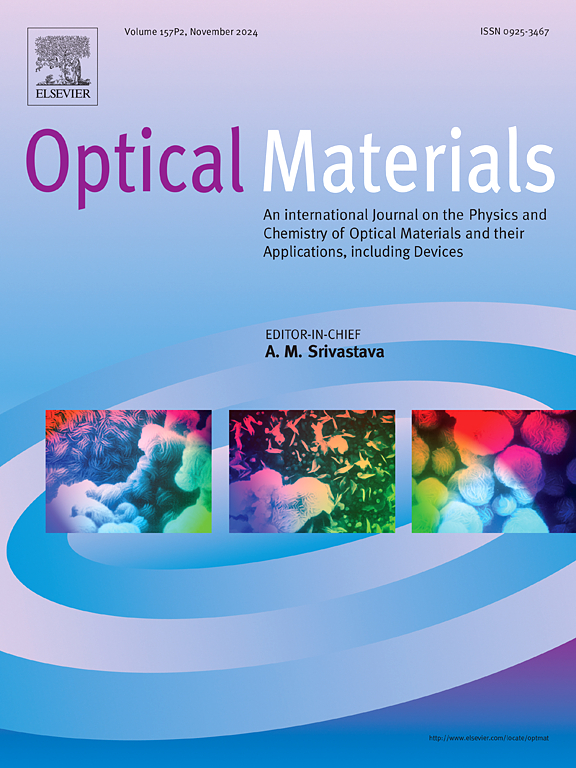Eu3+: BiPO4和Eu3+: NaYF4两种修饰量化控制的相互作用和自修饰双稳定性
IF 3.8
3区 材料科学
Q2 MATERIALS SCIENCE, MULTIDISCIPLINARY
引用次数: 0
摘要
我们报道了Eu3+: BiPO4和Eu3+: NaYF4的相互作用和自修饰双稳定性由两个修饰量化控制。我们通过微扰相位、声子相位和两个修饰相位证明了双激光修饰相互作用在时间和谱域的可控性。在荧光(FL)和自发四波混合区(SFWM)中观察到破坏性和建设性修整光谱剖面相互作用。从强到弱的破坏性/建设性修整谱线相互作用的演变受时间门宽度和时间门位置的控制。双激光强时间奥特勒-汤斯(AT)分裂剖面相互作用是由修饰诱导的破坏性量子化产生的。光子-声子修饰导致一个激光器和两个激光器的建设性/破坏性剖面相互作用。由于破坏性相互作用,宽带激光修整产生宽倾角,而窄带激光修整由于建设性相互作用产生宽峰值。此外,我们证明了两种激光器的双稳性是由AT区态密度的差异引起的,这是由于对称的自修饰和额外的量子化。这些发现在光学器件和量子信息处理方面具有潜在的应用前景。本文章由计算机程序翻译,如有差异,请以英文原文为准。
Interaction and self-dressing bistability controlled by two dressing quantization in Eu3+: BiPO4 and Eu3+: NaYF4
We report that interaction and self-dressing bistability is controlled by two dressing quantization in Eu3+: BiPO4 and Eu3+: NaYF4. We demonstrate the controllability of two-laser dressing interactions in both the time and spectral domains through perturbation phase, phonon phase, and the two dressing phases. The destructive and constructive dressing spectral profile interactions are observed in fluorescence (FL) and spontaneous four-wave mixing region (SFWM). The evolution from strong to weak destructive/constructive dressing spectral profile interactions is controlled by the time gate width and time gate position. Two lasers strong temporal Autler-Townes (AT) splitting profile interaction comes from dressing induced destructive quantization. The photon-phonon dressing lead to one laser and two lasers constructive/destructive profile interaction. A broadband laser dressing results in a broad dip due to destructive interactions, while narrowband laser dressing produces a broad peak due to constructive interactions. Furthermore, we demonstrate that the bistability of two lasers arises from differences in the density of states in the AT region, attributable to symmetric self-dressing and additional quantization. These findings have potential applications in optical devices and quantum information processing.
求助全文
通过发布文献求助,成功后即可免费获取论文全文。
去求助
来源期刊

Optical Materials
工程技术-材料科学:综合
CiteScore
6.60
自引率
12.80%
发文量
1265
审稿时长
38 days
期刊介绍:
Optical Materials has an open access mirror journal Optical Materials: X, sharing the same aims and scope, editorial team, submission system and rigorous peer review.
The purpose of Optical Materials is to provide a means of communication and technology transfer between researchers who are interested in materials for potential device applications. The journal publishes original papers and review articles on the design, synthesis, characterisation and applications of optical materials.
OPTICAL MATERIALS focuses on:
• Optical Properties of Material Systems;
• The Materials Aspects of Optical Phenomena;
• The Materials Aspects of Devices and Applications.
Authors can submit separate research elements describing their data to Data in Brief and methods to Methods X.
 求助内容:
求助内容: 应助结果提醒方式:
应助结果提醒方式:


